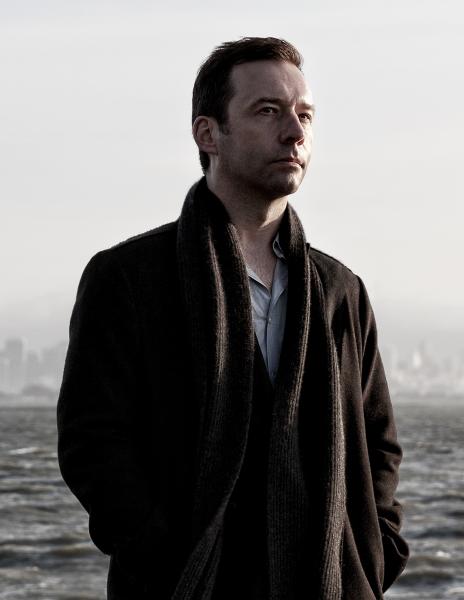Asked what he would want to tell a reader coming to the mind-bending near-future saga cold, the prize-winning Berkeley author says, “I would want to tell them nothing. They can find their own way.”
copyright by www.berkeleyside.com
Seated on the patio of Mission Heirloom in the Gourmet Ghetto, Mason, 42, still jetlagged from his return from a writers’ retreat in Tuscany, relents a bit when pressed for elaboration. “I hate describing it,” he says. “But when forced, I say it’s a combination between Mrs. Dalloway and Neuromancer .” That’s an elevator pitch that actually says something meaningful.
 Artificial Intelligence and Void Star
Artificial Intelligence and Void Star
Published by Farrar, Straus & Giroux on April 11, Void Star follows three disparate characters as they navigate a future world altered by climate change, social inequality, longevity extension, digital brain implants and the machinations of incredibly powerful artificial intelligences. Irina Sundren, bearing an implant that bestows perfect recall, specializes in communing with AIs on behalf of their super-rich human creators. Brazilian-born Thales, a survivor of the assassination attempt that took his politician father’s life, also has an implant, one that imperfectly tries to reassemble his shattered memory. Thief and killer-for-hire Kern lives in the favela surrounding San Francisco until he steals the wrong phone from the wrong victim. Eventually, the three narrative strands converge into a meditation on mortality, reality and human and inhuman consciousness.
Mrs Dalloway of the Future
On its shiny, high-tech surface, Void Star doesn’t seem to have much in common with the early 20th-century modernism of Virginia Woolf. As Mason admits, “Not much happens in Mrs. Dalloway. It’s just characters floating around London.” While there is plenty of globe-trotting action in Void Star, that aspect of the narrative isn’t necessarily its primary objective. As Mason says about Mrs. Dalloway, “It’s about the consciousness of (three) characters and the texture of their experience. And that’s a lot of what I was trying to do with Void Star.” The book’s connection to William Gibson and his first novel, Neuromancer, will likely be obvious to anyone who grew up reading what was once called “cyberpunk,” stories set where the barriers between the human and the digital worlds are more permeable.
read more – copyright by www.berkeleyside.com


Asked what he would want to tell a reader coming to the mind-bending near-future saga cold, the prize-winning Berkeley author says, “I would want to tell them nothing. They can find their own way.”
copyright by www.berkeleyside.com
Seated on the patio of Mission Heirloom in the Gourmet Ghetto, Mason, 42, still jetlagged from his return from a writers’ retreat in Tuscany, relents a bit when pressed for elaboration. “I hate describing it,” he says. “But when forced, I say it’s a combination between Mrs. Dalloway and Neuromancer .” That’s an elevator pitch that actually says something meaningful.
Published by Farrar, Straus & Giroux on April 11, Void Star follows three disparate characters as they navigate a future world altered by climate change, social inequality, longevity extension, digital brain implants and the machinations of incredibly powerful artificial intelligences. Irina Sundren, bearing an implant that bestows perfect recall, specializes in communing with AIs on behalf of their super-rich human creators. Brazilian-born Thales, a survivor of the assassination attempt that took his politician father’s life, also has an implant, one that imperfectly tries to reassemble his shattered memory. Thief and killer-for-hire Kern lives in the favela surrounding San Francisco until he steals the wrong phone from the wrong victim. Eventually, the three narrative strands converge into a meditation on mortality, reality and human and inhuman consciousness.
Mrs Dalloway of the Future
On its shiny, high-tech surface, Void Star doesn’t seem to have much in common with the early 20th-century modernism of Virginia Woolf. As Mason admits, “Not much happens in Mrs. Dalloway. It’s just characters floating around London.” While there is plenty of globe-trotting action in Void Star, that aspect of the narrative isn’t necessarily its primary objective. As Mason says about Mrs. Dalloway, “It’s about the consciousness of (three) characters and the texture of their experience. And that’s a lot of what I was trying to do with Void Star.” The book’s connection to William Gibson and his first novel, Neuromancer, will likely be obvious to anyone who grew up reading what was once called “cyberpunk,” stories set where the barriers between the human and the digital worlds are more permeable.
read more – copyright by www.berkeleyside.com
Share this: